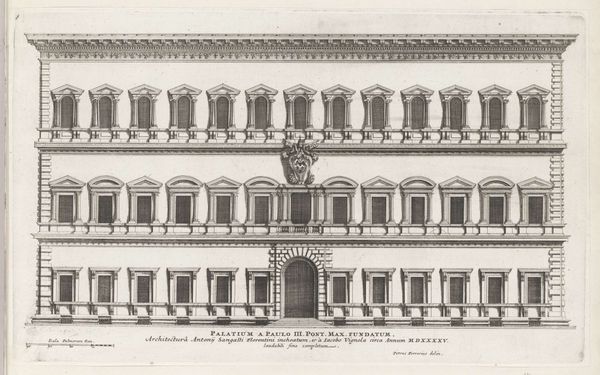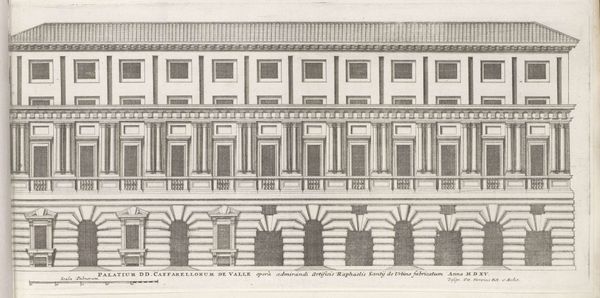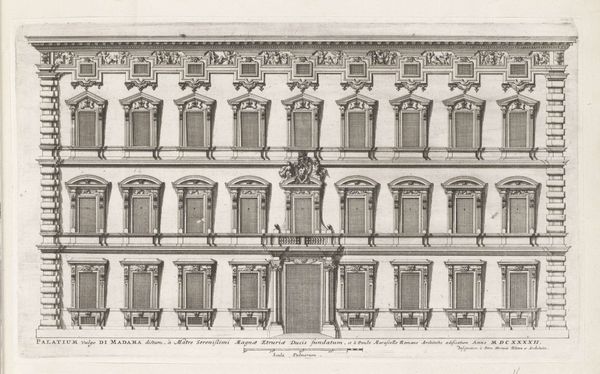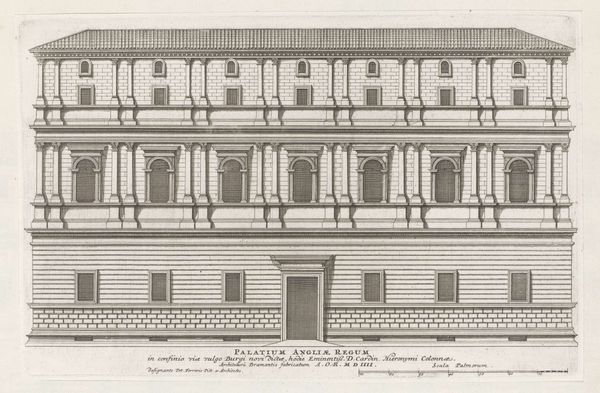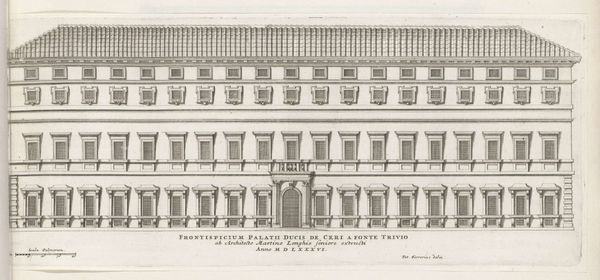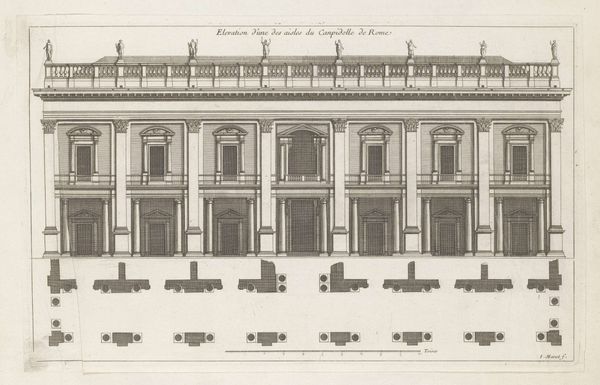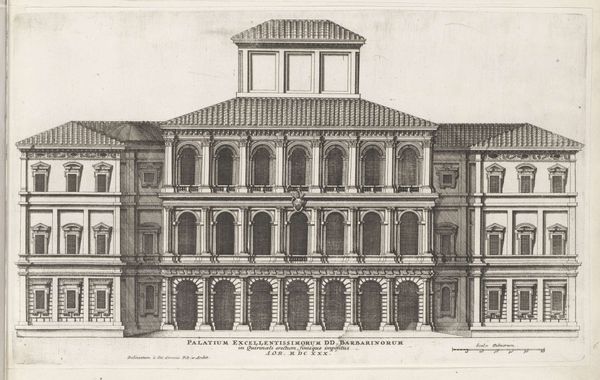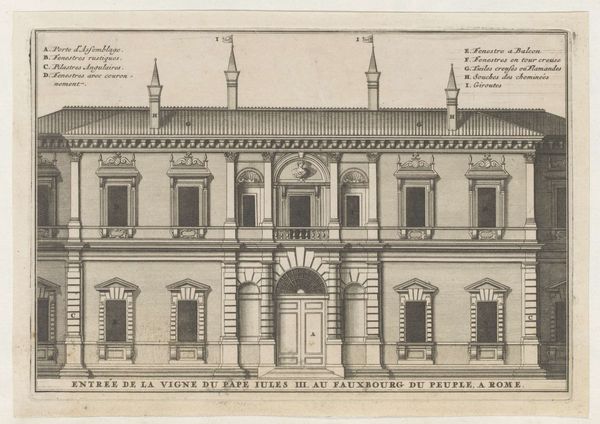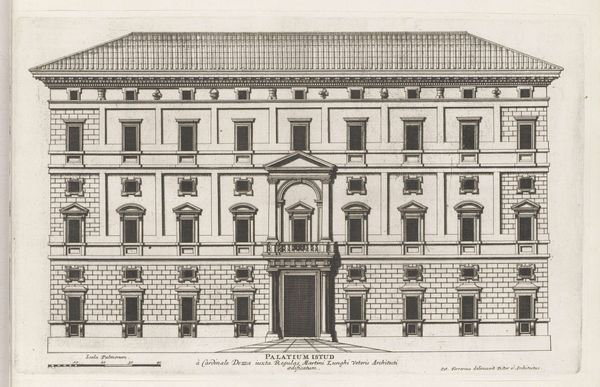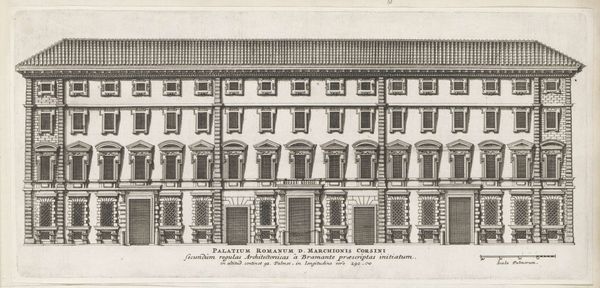
print, engraving, architecture
#
baroque
# print
#
line
#
cityscape
#
history-painting
#
engraving
#
architecture
Dimensions: height 192 mm, width 353 mm
Copyright: Rijks Museum: Open Domain
Editor: Here we have Giovanni Battista Falda’s engraving from 1655, "Façade van het Lateraans Paleis te Rome," a detailed architectural study, currently held at the Rijksmuseum. It feels…stark. Very linear and precise. Almost overwhelmingly symmetrical. What stands out to you most when you look at it? Curator: Ah, symmetry’s embrace! Yes, and the implied power, don't you think? Look how Falda captures not just a building, but a statement of authority. The Lateran Palace was, after all, deeply entangled with papal history. It’s less a portrait of stone and more a performance of control. And, the perspective – isn’t it intriguing how he’s flattened it slightly? Almost as if trying to contain the Palace, stop its essence from spilling out. Makes you wonder about Falda's intention, doesn’t it? Did he intend reverence or perhaps… something else? Editor: I hadn't thought about it as a 'performance of control'. The flattening makes sense when you put it that way; it's like, reducing its overwhelmingness. The line work contributes to the control. Curator: Precisely! Imagine Falda carefully etching each line, channeling Baroque’s drama, yet holding it tight within rigid forms. But doesn't the very act of depiction – turning something three-dimensional into two – inherently involve control? Perhaps it’s about humankind’s ambition: forever capturing, classifying, understanding, if that is possible. Editor: That’s a thought-provoking point. I definitely see more in it than just the linear façade now. Curator: Isn't it fascinating how one piece can hold a universe of meanings? Just waiting for us to unlock it with a question.
Comments
No comments
Be the first to comment and join the conversation on the ultimate creative platform.
